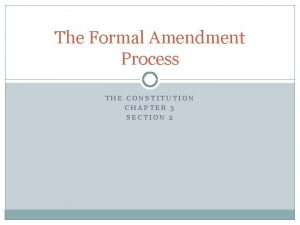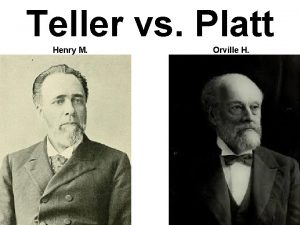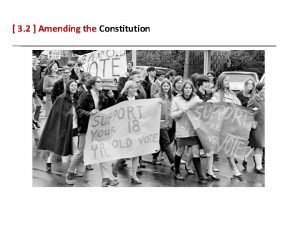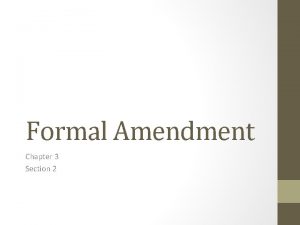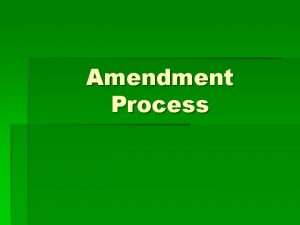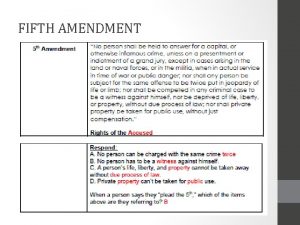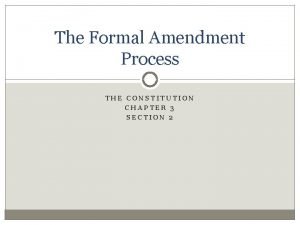CHAPTER 3 THE CONSTITUTION Section 2 Formal Amendment






- Slides: 6

CHAPTER 3: THE CONSTITUTION Section 2: Formal Amendment

Amendment Process � Amendment = A change in the written words of the Constitution. � Formal Amendment = Changes or additions that become part of the written language of the Constitution itself.

Types of Proposals for Amendments � � 1. 2/3 vote in each house of Congress & ¾ vote in the state legislatures (38 states) (26 of 27 amendments). 2. Proposed by Congress & ratified by state conventions ( 1 amendment) 3. Proposed by a national convention which is called for by Congress at the request of the state legislatures (has never happened) 4. Amendment is proposed by a national convention and ratified by conventions in ¾ of the states (only the Constitution itself was done this way)

Federalism & Popular Sovereignty � Formal amendment process emphasizes federal character. � Proposal takes place at federal level and ratification takes place at state level.

Proposed Amendments � Since 1789 there have been 12, 000 joint resolutions calling for amendments that have been proposed in Congress. � Only 33 of them have been sent to the states. � Only 27 have been ratified.

Bill of Rights � � � First 10 amendments Added by the 1 st session of the 1 st Continental Congress in 1789. Ratified in 1791 Each arose due to a problem with the Constitution itself Set out the Constitutional guarantees of freedom of belief & expression, of freedom & security of the person, & fair & equal treatment before the law.
